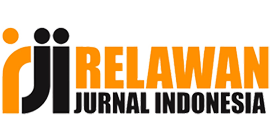Pengaruh Media Video Animasi terhadap Kemampuan Mengenal Huruf Vokal pada Siswa Disabilitas Intelektual Ringan Kelas IV
DOI:
https://doi.org/10.31539/joeai.v8i5.16377Abstract
This study aims to determine the effect of animated video media on the ability to recognize vowels (a, i, u, e, o) in fourth-grade students with mild intellectual disabilities at Jember State Special Needs School. The research method employed is Single Subject Research (SSR) with an A-B design, consisting of two phases: the baseline phase (A), comprising five sessions, and the intervention phase (B), comprising eight sessions. The results of the analysis in the conditions show that the baseline phase has a percentage score of 35%–50% with a mean level of 42% and a stability range of ±3.7. The data within the stability range is only 1 out of 5 sessions, or 20%, so the data in the baseline phase is declared unstable. In the intervention phase, the percentage score increased from 45% to 85%, with a mean level of 68.7% and a stability range of ±6.3. The data in the stability range is only 2 out of 8 sessions, or 25%, so the intervention phase is also declared unstable. Although both phases exhibited unstable conditions based on the criteria (<80%), there was a significant increase in ability levels from Phase A to Phase B, from a high score of 50% to 85%, as well as a positive level change of +20. No overlap in data (0%) was found, which strengthens the intervention's influence on changing the target behavior. In conclusion, animated video media has been shown to have a positive effect on improving vowel recognition skills in students with mild intellectual disabilities. This study recommends the use of visual-interactive media such as animated videos in special education learning at special needs schools (SLB).
Keywords: Animated Video, Vowels, Intellectual Disability
References
Arsyad, A. (2011). Media pembelajaran. Jakarta: PT RajaGrafindo Persada
Erica, D., Haryanto, H., Rahmawati, M., & Vidada, I. A. (2019). Peran Orang Tua terhadap Pendidikan Anak Usia Dini dalam Pandangan Islam. Jurnal Perspektif Pendidikan dan Keguruan, 10(2), 58–66. https://doi.org/10.25299/perspektif.2019.vol10(2).3993
Juliana, I. (2024). Bahaya Verbal Abuse terhadap Perkembangan Mental dan Kepercayaan Diri Anak. CENDEKIA Jurnal Ilmu Sosial Bahasa dan Pendidikan, 4(4), 116-126. https://doi.org/10.55606/cendekia.v4i4.3294
Munir, M. (2012). Multimedia: Konsep dan Aplikasi dalam Pendidikan. Bandung: Alfabeta
Schalock, R. L., Luckasson, R., & Tasse, M. J. (2021). Intellectual Disability: Definitions, Diagnosis, Classification, and Systems of Supports. American Journal on Intellectual and Developmental Disabilities, 126(6), 439-442. https://doi.org/10.1352/1944-7558-126.6.439
Sudjana, N., & Rivai, A. (2011). Media Pembelajaran: Strategi Pengajaran Efektif. Bandung: Sinar Baru Algensindo
Sugiyono, S. (2017). Metode Penelitian Pendidikan: Pendekatan Kuantitatif, Kualitatif, dan R&D. Bandung: Alfabeta
UU RI No. 20 Tahun 2003 tentang Sistem Pendidikan Nasional. (2003). Jakarta: Kementerian Pendidikan Nasional.
Wahyudi, A., & Azheri, B. (2011). Kebijakan Pendidikan di Indonesia. Jakarta: PT RajaGrafindo Persada
Downloads
Published
Issue
Section
License
Copyright (c) 2025 Elisabeth Lusitania Ledu, Nostalgianti Citra Prystiananta, Arifah Nurhadiyati

This work is licensed under a Creative Commons Attribution-NonCommercial 4.0 International License.


